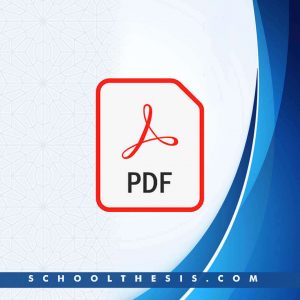Phytochemical and Antimicrobial Screening of the Stem Bark Extract(S) of Indigofera Arrectahochst Ex a. Rich (Fabaceae)

Phytochemical and Antimicrobial Screening of the Stem Bark Extract(S) of Indigofera Arrectahochst Ex a. Rich (Fabaceae)
Quick Navigation for Final Year Undergraduates, Masters (Thesis), and Ph.D. Dissertation Students Who Need Our Services on Their Research Works
| Find More Project Topics | FIND HERE |
| Hire Us for Thesis Works | HIRE NOW |
| Hire Us for Project Works | HIRE NOW |
| Hire Us for Seminar Works | HIRE NOW |
| Hire Us for Assignments | HIRE NOW |
| Hire Us for Proposals | HIRE NOW |
| Contact Us | HERE NOW |
Abstract on Phytochemical and Antimicrobial Screening of the Stem Bark Extract(S) of Indigofera Arrectahochst Ex a. Rich (Fabaceae)
The Pulverized stem bark of Indigofera arrectawas exhaustively extracted with methanol and concentrated in vacuo using rotary evaporator at 40 0C.The extract was later subjected to solvent partitioning to yield soluble extracts of n-hexane, ethyl acetate, chloroform, and methanol. Genernal phytochemical screening of the fractions revealed the presence of secondary metabolites such as cardiac glycoside,steroid, terpenes flavonoids and tannins. The antimicrobial activity against S. aureus,S. pyogenes,S.feacalis, S.typhii, E.coli C. ulcerans,P. vulgaris and C.albicans was tested using the tube dilution and agar diffusion methods as outlined by the NCCLS. The results of the antimicrobial activity as indicated by the zonesof inhibition of growth of microorganism ranged from 20mm to 40mm for the n-hexane extract, 16mm to 21mm for ethyl acetate extract and 20mm to 27mm for the methanol extract. The MIC result for the n-hexane, ethyl acetate and methanol extracts ranged from 7.5mg/ml to 15mg/ml. The MIC of 15mg/ml exhibited by the n-hexane extract against both gram positive and gram negative bacteria indicates broad spectrum activity of Indigofera arrect. The n-hexane fractions was subjected to Column Chromatography using silica gel to yield 87 fractions, which were combined based on their thin layer chromatography analysis and recrystallized in methanol to give a pure white crystalline powder, which melts at 144oC. The structure of the isolated compound was established by spectroscopic analysis and by direct comparison of the data obtained with those reported in literature to be Stigmasterol (3β,22E-Sigmasta-5,22-dien-3-ol).
Chapter One of Phytochemical and Antimicrobial Screening of the Stem Bark Extract(S) of Indigofera Arrectahochst Ex a. Rich (Fabaceae)
Definition of a drug
Disclaimer
This research material is intended for academic use only and should be used as a guide in constructing your research project and seminar presentation. You should never duplicate the content word for word (verbatim), as SCHOOLTHESIS.COM will not be held liable for anyone who does.
The purpose of publishing this material is to alleviate the stress of hopping from one school library to the next in search of research materials. This service is lawful because all educational institutions allow students to read past projects, papers, books, and articles while working on their own.
SCHOOL THESIS is merely giving this information as a research reference. Use the document as a reference or structure for your own research paper. This paper’s content should be able to assist you in coming up with new ideas and thoughts for your own study
Phytochemical and Antimicrobial Screening of the Stem Bark Extract(S) of Indigofera Arrectahochst Ex a. Rich (Fabaceae) research paper, should only be used as a guide.
